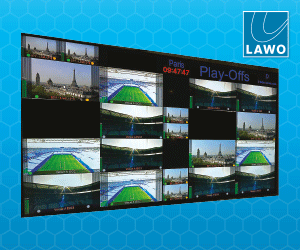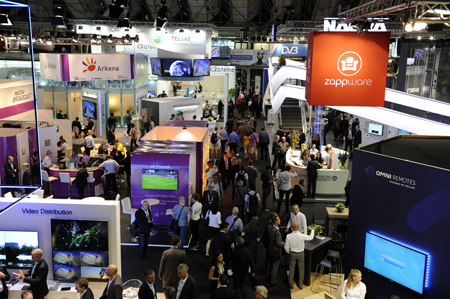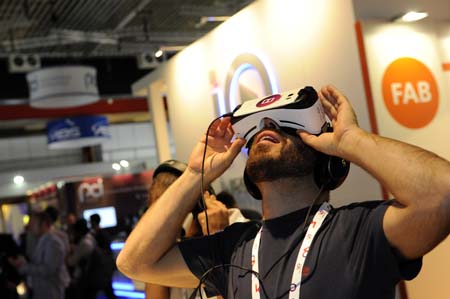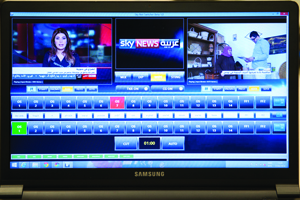From exploring the possibilities of 3D holograms to discovering an innovative effort to create more engagement with the TV viewer, a CTO highlights ingenious solutions at IBC

The move to IP is maturing, with many real products and solutions now available to help systems integrators and broadcasters build much more flexible systems.
Case studies are plentiful, with the best examples of remote production seen in sports and events coverage.
Cloud
The maturity of cloud still seems a long way off, even after many years of discussion, with most if not all claiming a cloud solution. If you scratch beneath the surface, however, this is often a me-too lift-and-shift rather than a complete redesign. For those claiming true micro-services architectures, I have found loyalties to be split between Microsofts ACS and Docker swarm. You cant help but wonder if the choice hints at code reuse. Most of the people I spoke to were happy to tell me that nobody else was really doing it properly; legacy seems to be preventing true innovation.
AI?
A number of vendors were talking AI, the umbrella term for a mixture of machine learning, deep learning and natural language processing. In most cases, AI (or ML) was being used for the recognition and automated tagging of content, detecting advertising or security. There were many examples of automated highlights production for sports and insights into consumption.
Some well-known solution providers gave demonstrations of NLP and ML, with some old and new vendors describing how they put these ideas to use in their software. Im a great believer in what this technology can bring to broadcast and saw plenty of examples of refining existing processes, with a lot of focus on the automatic recognition or understanding of content; but disappointingly, there was very little on show that applied these ideas to something new and exciting, where I see the most opportunity.
There seems to be a lot of effort put into automatically discovering things that we already know. If we target these principles at the wealth of content and data we already have, we could truly see the advantages. Human and artificial minds working together can produce incredible results, and more importantly, surprises.
Security
It was encouraging to see how frequently security was discussed, not from the perspective of reasons not to do something, i.e. cloud, but in the context of recent well documented breaches and the increased frequency of ransomware and state-sponsored hacking. For a long time, it has been problematic for broadcasters to take the required precautions, the validation of security patches by vendors taking too long or being non-existent, and the ability to deploy server-based monitoring tools sometimes denied.
It has already become prevalent in RFPs and customer choices that security needs are met in a timely manner, and this is being written into support agreements, such is the likelihood and magnitude of the risk. Initiatives from organisations such as the DPPs Committed to Security Programme have been launched to support this.
Blockchain
A somewhat new term being bandied about was blockchain. Born from the crypto-currencies that were once the domain of the brave or the dark web, we have seen this technology enter the mainstream and the opportunities for its use are intriguing. While most of the discussion centred on antipiracy, we heard a few suggestions on how an incorruptible digital ledger of transactions could help owners not only to get paid but also to gain valuable insights into their media.
Its great to see these technologies that have become mature in so many industries making their way into broadcasting. Of course, its only when you bring them all together and start again with a clean sheet of paper that you can build something special.
There are a few companies trying this within their own breadth of experience, while others are choosing to gain benefits through alliances. Encouragingly, a handful of companies are actually trying something different.
Cord-nevers versus cord-cutters
We all know that the patterns of content consumption are changing; none of our children are choosing linear and most are abandoning television in favour of smart devices. We have heard about cord-cutters, but there is a growing number of cord-nevers, and even mature people are consuming much more content on the move. With the inevitable arrival of autonomous transport and 5G, this is only going to increase.
Covatic has realised this and is using a mixture of AI, data crunching and really clever content manipulation to develop a solution that understands our preferences and uses the opportunities in our day to target relevant and appropriate content.
Sceenic is thinking about experience and engagement with Watch Together, a set of tools that can be integrated into a broadcasters existing applications or STBs. It encourages friends, family or fans to watch content together and interact in real time as if they were sharing a sofa. The mechanics are well thought-out and intuitive. Spending just a few minutes with the team, you can see how appropriate content targeted at the right demographic could lead to exciting opportunities for immersive and interactive experiences.
The future
If you want something truly revolutionary, imagine a display that can project 3D holograms. Working with mind-boggling resolution and without the need for any head-worn devices would take this a step further. Imagine also the ability to touch them. This is the vision painted by Light Field Lab, using, as the name suggests, light fields, volumetric haptics and acoustic waves to simulate the sensation of touch. The visual part is in pre-fabrication and expected within the next few years.
And that really would change everything
Dominic Baillie is CTO in Residence at Disruptive Ideas Ltd, helping companies use advanced concepts in AI, data and cloud to build innovative products.













































































